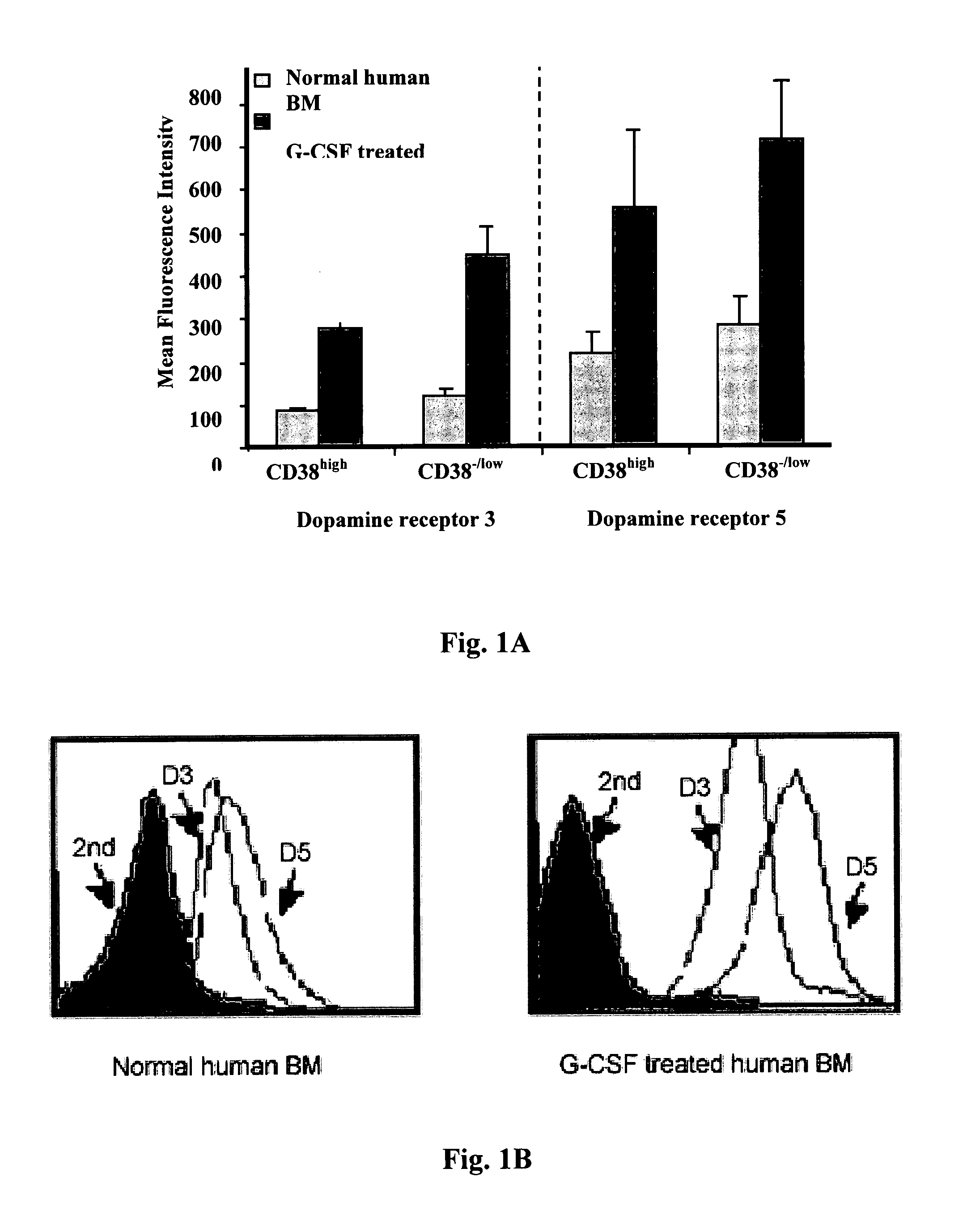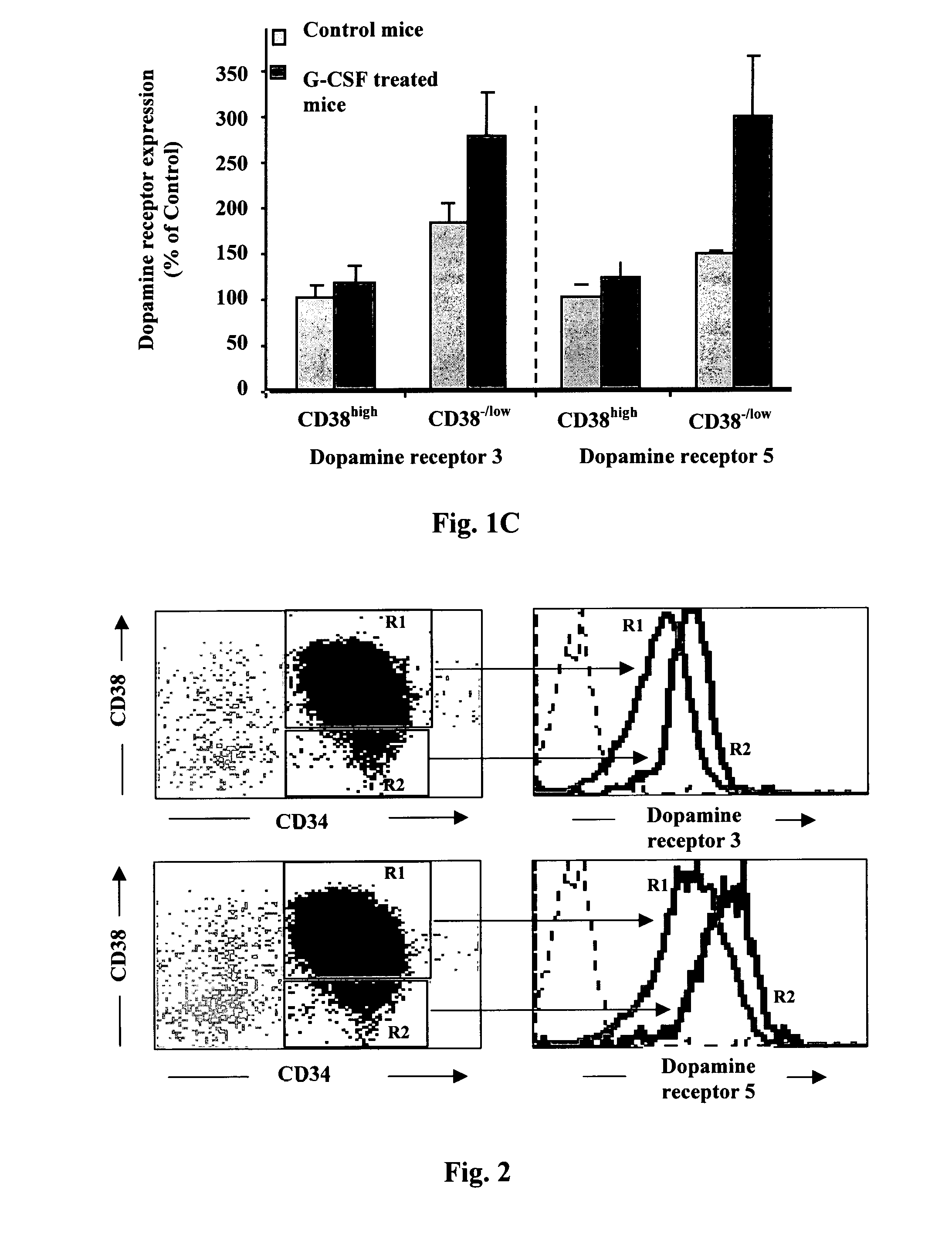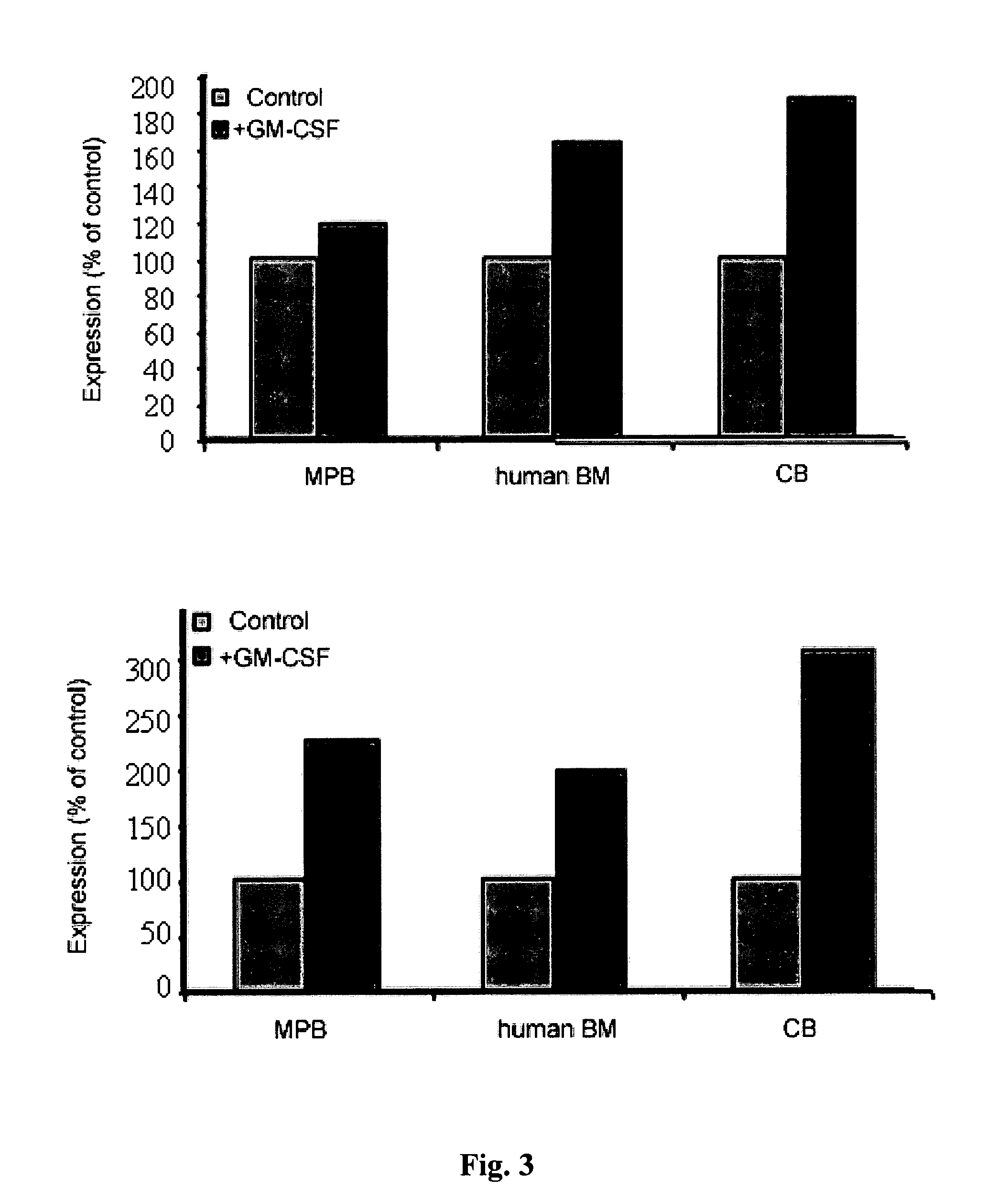Catecholamine receptor modulation
a catecholamine receptor and receptor technology, applied in the field of catecholamine receptor receptors, can solve the problems of less suitable sources for transplantation into adults, and achieve the effects of improving or facilitating stem cell mobilization, increasing stem cell mobilization, and improving stem cell mobilization
- Summary
- Abstract
- Description
- Claims
- Application Information
AI Technical Summary
Benefits of technology
Problems solved by technology
Method used
Image
Examples
example 1
Human Hematopoietic Stem Cells Express Dopamine Receptors on their Surface
[0227]Expression of dopamine receptors type 3 and 5 was evaluated on the surface of CD34+ enriched cells that were obtained from different sources. Enriched human CD34+ cells were obtained, as indicated in the material and method section, from the following sources: bone marrow (BM), mobilized peripheral blood, and umbilical cord blood. We found by flow cytometry analysis that enriched human CD34+ cells from all sources express both types of dopamine receptors on their surface. Interestingly, the level of expression of the receptors varied depending on the source of the cells and whether the subject was treated with G-CSF or not. For example, the expression of dopamine receptor on the surface of enriched CD34+ cells derived from BM of G-CSF treated healthy donors was about 2-4 folds higher than that of enriched CD34+ cells derived from bone marrow (BM) of untreated healthy human donors (FIG. 1A, B). Furthermor...
example 2
Myeloid Cytokines Such as G-CSF and GM-CSF Increase the Levels of Dopamine Receptor on the Surface Human CD34+ Cells
[0228]In the preceding Example we showed that stem cells derived from individuals treated with G-CSF exhibited increased levels of dopamine receptors in their surface. The following experiment was carried out in a functional in vivo animal model to verify that the level of dopamine receptor in the surface of human stem cells increases upon stem cell exposure to G-CSF. This model comprises mobilization of stem cell to the peripheral blood induced by treatment of chimeric NOD / SCID mice with G-CSF. Chimeric NOD / SCID mice consist of mice that underwent xenotransplantation with human hematopoietic mononuclear cells (MNCs) from cord blood (CB). Since, as previously published Petit (2002), robust mobilization of hematopoietic stem cells to the peripheral blood (PB) is achieved after 5 daily consecutive injections of G-CSF we collected BM cells at this stage. Next, we separate...
example 3
Dopamine Agonists Increase Clonogenic Progenitor Content of Cord Blood CD34+ Cells
[0230]GM-CSF and G-CSF are known for their role in myeloid differentiation and in stem cell regulation. It is common practice to add these cytokines to progenitor colony forming assay (CFU) in order to facilitate detection of human progenitors. In view of the role of GM-CSF and G-CSF in stem cell regulation and on our findings that these cytokines directly induce relatively high expression of dopamine receptors on the primitive CD34+ / CD38− / low, we hypothesized that dopamine receptors may have a role in regulation or function of stem and progenitor hematopoietic cells. We therefore tested whether up regulation of dopamine receptor levels affects progenitor development in vitro. For this purpose cord blood CD34+ cells were seeded in semi solid cultures (1×103 cells / ml in 1 ml) supplemented with the cytokines Epo (2 u / ml; Orto Bio Tech, Don Mills, Canada.), SCF (50 ng / ml; R&D) and IL-3 (5 ng / ml R&D) and w...
PUM
| Property | Measurement | Unit |
|---|---|---|
| concentrations | aaaaa | aaaaa |
| pH | aaaaa | aaaaa |
| diameter | aaaaa | aaaaa |
Abstract
Description
Claims
Application Information
 Login to View More
Login to View More - R&D
- Intellectual Property
- Life Sciences
- Materials
- Tech Scout
- Unparalleled Data Quality
- Higher Quality Content
- 60% Fewer Hallucinations
Browse by: Latest US Patents, China's latest patents, Technical Efficacy Thesaurus, Application Domain, Technology Topic, Popular Technical Reports.
© 2025 PatSnap. All rights reserved.Legal|Privacy policy|Modern Slavery Act Transparency Statement|Sitemap|About US| Contact US: help@patsnap.com



